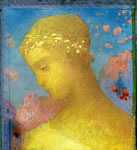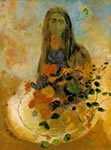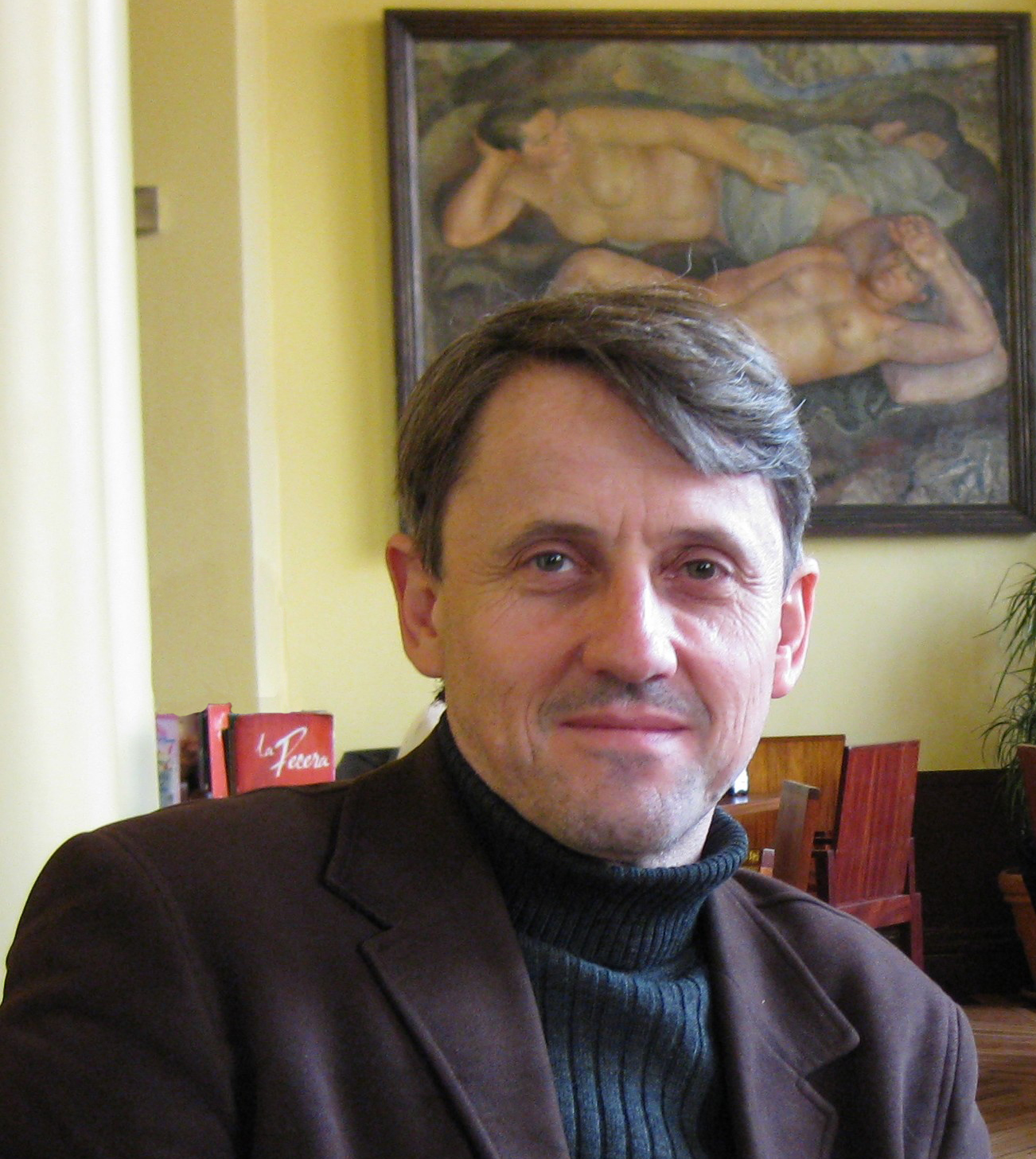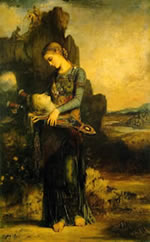Angst in Symbolist Movement: Its Origins and Its Consequences
June 4 - 6, 2015 | The University of Paris IV-Sorbonne, France

| HOME |
| CONFERENCE |
| PARTICIPANTS |
| CALL FOR PAPERS |
| PROGRAM |
| TRAVEL & LODGING |
| ORGANIZERS |

| KEYNOTES |
Edward Burne-Jones' The Sirens: Magical Whispers A mermaid found a swimming lad, William Butler Yeats This presentation will analyze the symbolism of the Sirens as creatures of water in the spectacular painting of the Pre-Raphaelite artist, Edward Burne-Jones, The Sirens (1870, at the Ringling Museum in Sarasota, Florida). The dual symbolism of the water–source of life and death is paralleled to the Symbolist concept of femme fatale. Sirens are hybrid creatures, half animal half woman with strong feminine identities (Fig. 1). Beginning in 1870, Burne-Jones commences painting this theme, reworking it in 1880, 1891, 1895 and 1896. Despite his many attempts to complete the work, it remains unfinished at his death in 1898. Numerous sketches and drawings perhaps the largest study found in the National Gallery of South Africa, Cape Town, attest to Burne-Jones' assiduous and inexhaustible commitment to complete such an ambitious project. Other drawings for the Siren's composition derive from the study of Renaissance painters, in particular Botticelli's The Coronation of the Virgin. Burne-Jones depicts a siren alluring with her melodious music the enchanted sailors from a musical angel in Botticelli's composition. He strongly admires Botticelli's paintings because of his sensitivity toward beauty. "Botticelli thinks well about (a painting) before he begins, and does what is beautiful always," Burne-Jones writes. In Burne-Jones' painting, a group of sirens stands before the rocks awaiting the arrival of a mysteriously–captured ship. The debris on the beach reveals their cryptic and ominous actions–men's bones and armor decorate the foreground of the painting. In the boat, the innocent sailors gaze with lust and passion at the mystifying beauty of the sirens, unaware of their destiny. The horizon with the last beam of light, alerts the viewer of impending doom. Burne-Jones' conceit may also derive from the Renaissance pictorial tradition, as shown in Andrea Alciato's Emblem 102, Sirens, in Diverse Imprese (Lyon 1551) and in Emblematum libellus (Venice 1546), The epigram alludes to seductive women as Burne-Jones' Sirens and states the following. Birds without wings and girls without legs and fish without a mouth, they nevertheless sing with their lips. In a letter of October 1891 to his dear friend and patron, F. R. Leyland, Burne-Jones explains this painting,
In her book, Penelope Fitzgerald describes this work as a "picture where magic is in control–truer than real–a ship under full sail, without wind, harbors into a shallow cove." Although Burne-Jones only saw the sea twice before he was twenty-three years old, his passion and impressions for the beauty of ships and the sea are expressed in his words: "I think a three-misted vessel in full sail is one of the loveliest sights in the world." In The Sirens, he recalls Ruskin's words in Queen of the Air.
Like with Andromeda in the Perseus cycle (1875-88 Staatsgalerie in Stuttgart, Germany), Burne-Jones visually bewitches the viewer to admire the beauty in The Sirens without considering its dramatic consequences. The viewer remains suspended in a paradoxical state. Burne-Jones' focuses, however, on creating an image out of love, for love, and for beauty's sake. "Only this is true, that beauty is very beautiful and softens, and comforts, and inspires, and rouses, and lifts up, and never fails," Burne-Jones writes. Biography Liana De Girolami Cheney, Professor of Art History, is the Chair of the Department of Cultural Studies, Coordinator of Art History and Interdisciplinary and Intercollegiate Studies at University of Massachusetts Lowell. She has written several books on Italian Renaissance, Mannerism, Pre-Raphaelite Art and Women's Art, notably, Quattrocento Neoplatonism and Medici Humanism in Botticelli's Mythological Paintings; Botticelli's Neoplatonic Images; The Paintings of the Casa Vasari; The Homes of Giorgio Vasari; Le dimore di Giorgio Vasari; Giorgio Vasari's Teachers: Sacred and Profane Art; Giorgio Vasari's Prefaces: Art and Theory; Giuseppe Arcimboldo: Magical Paintings; Religious Architecture of Lowell; Self-Portraits by Women Painters, Women Artists: "The Most Excellent Women Artists." She also has coauthored books on Whistler Papers, Whistler and His Birthplace, and Piero della Francesca's Treatise on Painting; and has authored and edited books on Andrea del Verrocchio's Celebration: 1435-1488; The Symbols of Vanitas in the Arts, Literature and Music; Pre-Raphaelitism and Medievalism in the Arts; Neoplatonic Aesthetics: Music, Literature and the Visual Arts; Readings in Italian Mannerism; Neoplatonism in the Arts; Reflection on Einar Rud's Giorgio Vasari's Life and Lives: The First Art Historian; and Giorgio Vasari: pennello, pluma e ardore. Her major articles include studies on sixteenth and seventeen-centuries female painters (Barbara Longhi, Lavinia Fontana, Sofonisba Anguissola, Elisabetta Sirani and Julia Lama), American, Dutch, French and Italian iconography (symbolism on oysters, skulls and musical instruments, images of Dante's Divine Comedy in Cinquecento Art, August Rodin's Gates of Hell, John White Alexander's Isabella, Giovanni Segantini's Good and Bad Mothers). Her forthcoming books are on Edward Burne-Jones' Mythological Themes, Giorgio Vasari's Artistic and Emblematic Manifestations, and Barbara Longhi: Female Painter of the Counter-Reformation. Using a few symbolist works by Dampt, Vallgren, Bartholomé, Saint-Marceaux, Biegas ou Aronson I would like to explore the nature of the Symbolist language. There are two concurent options that translate Symbolist sculptural expression. The first is the fluidity which manifests itself presenting forms in full light as a part of the Symbolism which could be considered idealist.The second is the texture of surfaces, which by stressing the contrasts of shadow and light, by substracting the features while almost misshaping them or by dramatizing the surfaces had a tendency of making sculptural Symbolism the Expressionist art before its time. These two tendencies stress how two modalities of Symbolist expression in sculpture reveal the essence of Symbolist aesthetics: the ambivalent nature of Symbolism, at once deeply mystical and deeply human. It is sometimes the iconographical choices which seem to determine the usage of these modalities while they coexist in the works of the same artist. But in addition it is always important to consider the materials and the techniques used to create works of art. I will give a privileged place to Naoum Aronson, Russian scuplturer who lived in France at a time when he was still unknown and who beautifully embodied in his work the double aspiration of the Symbolist movement. Biography Dominique Jarrassé is a professor of contemporary history of art at the University of Michel de Montaigne-Bordeaux 3 and at the Ecole du Louvre. He did his thesis at the University of Paris IV on The Thermal Architecture in France Between 1800 and 1850 and his HDR on The Architecture of Synagogues in France in the XIXth Century. He worked as a researcher at the French Institute of Architecture for the exhibition "Resort cities in France (1983-1985)", then as an Associate Professor at the University of Blaise-Pascal de Clermont-Ferrand. He curated many art exhibits, including "Time of Synagogues in France 1791-1914" at the Musée d'Orsay (1991). He published works on art of the end of the XIXth century: Toulouse-Lautrec, between the myth and modernity, Sers/AGEP, 1992 ; Rodin, Terrail, 1993 ; Odilon Redon: a Dream, Herscher, 1996. His research is divided in four main areas: History of Art History, Colonial Art, Architecture and Gardens of the XIX century, Architecture of Synagogues and Jewish Art.
|
Thanks to WebMuseum and its partners/contributors for allowing us to use the images by Gustave Moreau and Odilon Redon
|
||
|
Counter Visits |


